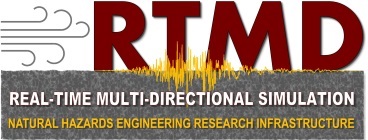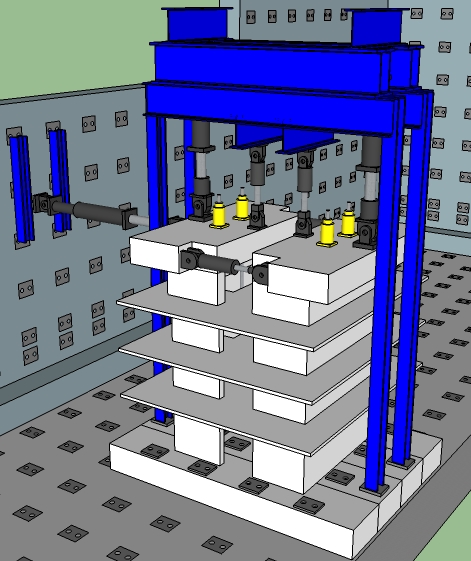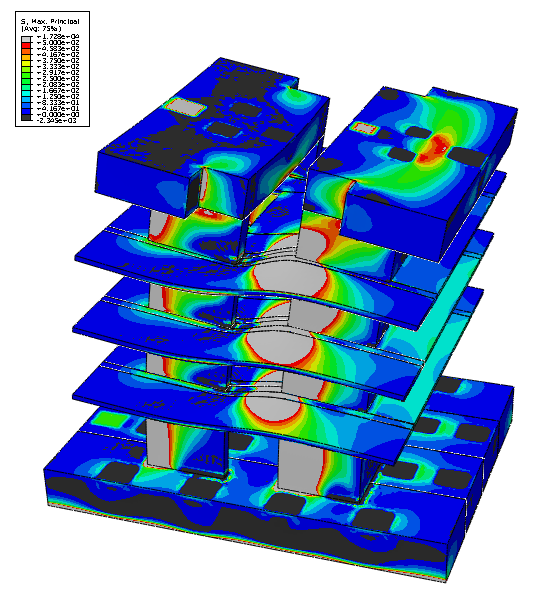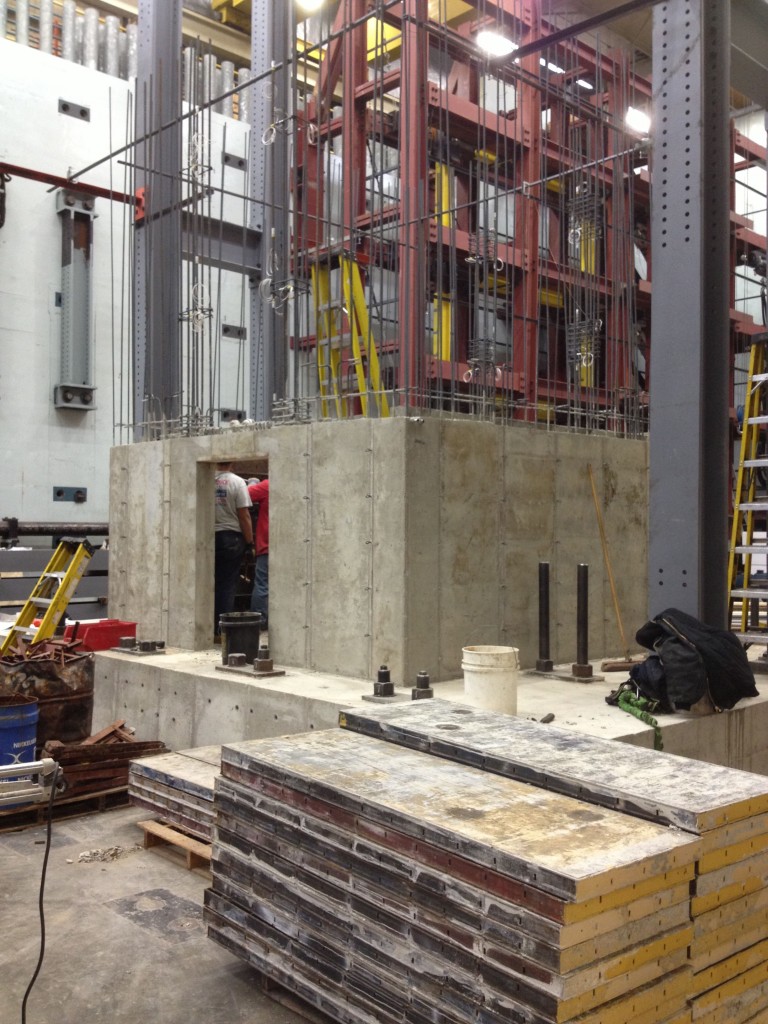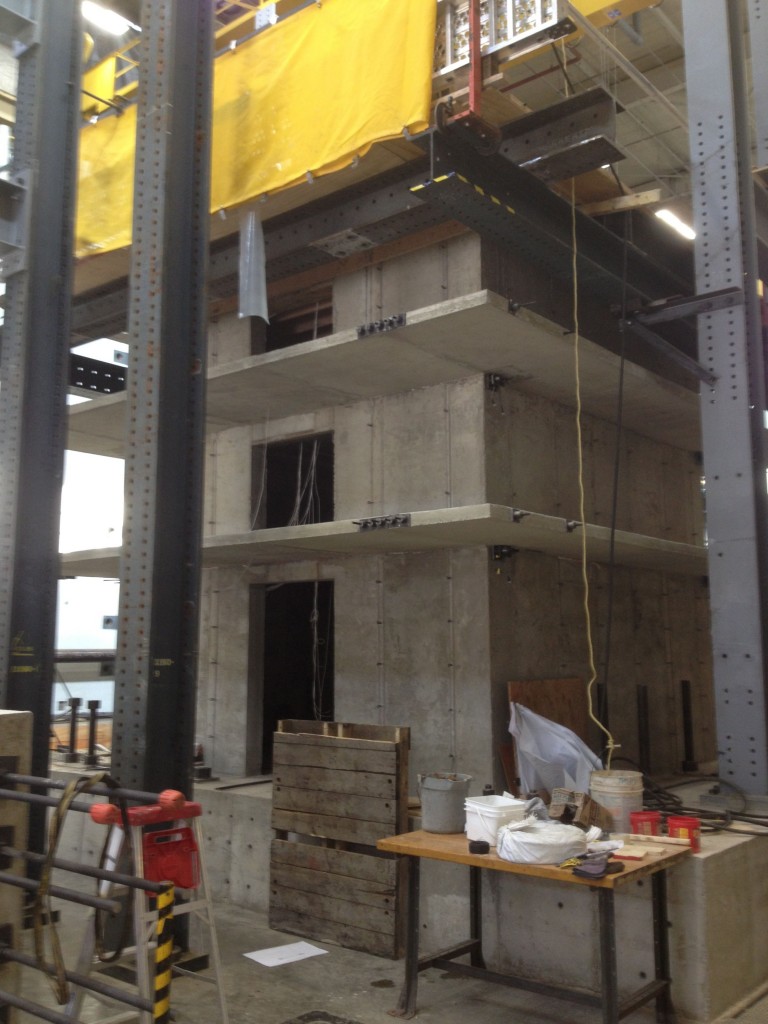Post-Tensioned Coupled Shear Wall Systems
Project Overview
This project investigates the feasibility of a new structural system for seismic regions, i.e., a seismic-resistant reinforced concrete (RC) coupled shear wall system where the widely-used, unbonded post-tensioned (PT) RC floor slab construction method is adapted for coupling (i.e., link) beams to develop coupling forces between the wall piers. The research objective is to develop a coupled wall system that provides significant performance, construction, and economic benefits, and that sustains little damage during a severe earthquake, over currently used shear walls coupled with diagonally reinforced coupling beams.
The primary intellectual merit of the research is the investigation of a new and more practical type of earthquake-resistant RC coupled building wall system with significant performance and economic benefits over conventional systems. Typical coupling beams in current construction are difficult to construct (they require large amounts of reinforcing steel arranged in complex geometries) and can experience considerable damage under seismic loading. In comparison, the primary reinforcement in the coupling beams of the new system consists of a single unbonded PT tendon, greatly simplifying construction. This system represents a significant innovation and transformation, but one that can be realistically achieved by utilizing an existing and widely-used technology. The deformations in the coupling beams occur primarily in the form of gap opening at the ends, resulting in little damage as the structure displaces laterally during a large earthquake. After the earthquake, the PT tendons provide a restoring force that closes the gaps and pulls the structure back toward its undeformed, plumb position. The single major barrier to the use of these structures in seismic regions is the lack of experimentally-validated design methods, construction procedures, and numerical simulation models. To fill this knowledge gap, large-scale physical laboratory experiments integrated with computer simulations of multi-story coupled wall structures will be conducted. The laboratory specimens will include the first three floors, tributary slabs, and foundations of two prototype systems, representing the most critical regions of the structures. The other (less critical) regions of the structures will be simulated in the computer resulting in a hybrid physical-computational research platform. Deformations of the laboratory structures will be monitored using multiple, three-dimensional, digital image correlation sensors, and the resulting near-full-field data will inform the other project areas. Ultimately, this information will lead to the development of validated design procedures and modeling/prediction tools for the new system.
RC coupled wall building structures are common in the United States. The research will provide direct service to society by pursuing the practical adoption of a new type of coupled wall system, thereby improving construction economy and mitigating future earthquake losses. Practicing engineers will participate in an advisory panel, and interactions with relevant professional organizations will facilitate rapid dissemination of the results to end users. Implementation of multiple-sensor digital image correlation for building structural evaluation is another innovative aspect of the work that can aid in adoption of this technology in other similar research programs.
Participants
Principal Investigator
- Yahya Kurama – University of Notre Dame
Co-Principal Investigator
- Michael McGinnis – University of Texas at Tyler
Graduate Research Assistant
- Steve Barbachyn – University of Notre Dame
Industry
Sponsors
NEES Project Archive
Disclaimer: This material is based upon work supported by the National Science Foundation under Grant Number CMMI-1041598. Any opinions, findings, conclusions, or recommendations expressed in this material are those of the authors and do not necessarily reflect the views of the National Science Foundation or other organizations/individuals acknowledged by the project.

